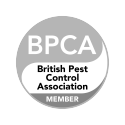Natural Bird Control Solutions
At Contego, our falconry bird control services provides a natural and effective solution to manage and deter pest birds. Using trained birds of prey, we create an environment of natural fear, encouraging pest birds to relocate. This humane method is highly effective for large open areas such as airports, industrial sites and agricultural lands.
An Ancient Art
Natural:
The use of Falconry works with our natural ecosystem rather than against it and is the perfect replacement for chemical treatments.
Effective:
Pests like gulls an pigeons will think twice before nesting when they know a predator is in the area, making it a highly effective deterrent.
Selective
Our falcons are trained to only target pests, without affecting other wildlife in the area, which is great for maintaining the biodiversity.
Humane Practice
How It Works
With our extensive knowledge of bird behaviour and the unique challenges they present, we know that effective falconry control requires a tailored approach. Whether you manage a commercial property or a residential area, we have a plan that's right for you. Here's how it works:

Where Falconry Works Best
While Falconry proves to be a versatile solution across various industries, certain sectors can benefit significantly by incorporating Falconry into their pest management strategy.
level up your protection against pest birds
COMBINE FALCONRY WITH BIRD PROOFING
Increase your chances of a bird free environment even more by combining falconry bird proofing solutions.

Raised with care
Our falcons are raised with the utmost care and intent, nurtured in a way that ensures their health, well-being, and exceptional performance. This thoughtful approach allows them to deliver precise and ethical pest control solutions, perfectly aligned with our commitment to excellence.

Want a Natural Bird Deterrence?
If you are interested in using a humane yet highly effective bird deterrence method, Falconry could be a great option for you! Don't let pest species get out of control, choose falconry for a harmonious and sustainable approach to bird control.
Causing the Problems
Pest Id
Pigeons:
Feral pigeons are prevalent in urban areas, where food is readily available and can be identified by their blue-grey feathers.

Pest Id
Gulls:
Otherwise known as Seagulls, these birds are large and can be aggressive. They can be identified by their large orange beak, white body and grey back.

More Pest Birds
Need Falconry Bird Control?
If you have signs of a bird infestation, it is important that you take action today! Birds can quickly get out of hand without the help of an expert. Take the first step & contact us for a reactive call out – our team will be with you in less than 48 hours.
Why We're Different
Proactive Service
Through thorough inspections, customised treatment plans, and ongoing monitoring, we help prevent reinfestation with scheduled follow-up visits.
Actionable Insights
Clients benefit from our Synergy Portal, which delivers real-time data derived from job findings and offers tailored recommendations for enhancing outcomes.
Environmentally conscious
We prioritise eco-friendly practices by minimising the utilisation of toxic chemicals and emphasising humane methods.
Frequently Asked Questions
Looking for a natural bird control solution?
In need of a highly effective bird control solution that's both natural and humane? Give us a call today and get started in implementing falconry bird control into your pest control operations.
















